Creating a catchy jingle requires more than good music. It involves strategic planning and a solid understanding of the brand’s essence. The journey from an idea to a final jingle can present several challenges, each needing thoughtful solutions.
Picking a jingle sound that fits a brand perfectly is crucial because it sets the tone for how consumers perceive the brand. The wrong choice might lead to confusion or misinterpretation.
Balancing creativity with consistency is another hurdle. While it’s important to push creative boundaries to stand out, staying true to the brand’s established image is equally essential. This balance ensures the jingle complements the overall marketing message without straying too far from what consumers recognize.
Collaboration is key in jingle production. Composers, marketers, and stakeholders need to work together smoothly to ensure a cohesive outcome. Effective communication can prevent misunderstandings and create an atmosphere where new ideas thrive.
Once the jingle is in place, testing it with audiences ensures it resonates well, providing valuable feedback for refinements and adjustments. Each step in this process is vital for producing a jingle that not only delights listeners but also strengthens the brand’s identity.
Identifying the Right Sound
Selecting the perfect jingle is crucial to establishing a strong brand identity. A jingle needs to be catchy and reflect the brand’s personality. It acts as the company’s audio signature, leaving a lasting impression on the audience. Matching the jingle with the brand image helps create a consistent message across all marketing channels.
To research and choose the right musical styles and tones, consider the following methods:
- Analyze Competitors: Listen to what other brands in your industry use. Identify what works and how you can differentiate your sound.
- Understand Your Audience: Consider the demographics and preferences of your target market. This insight helps choose tones that will resonate with them.
- Explore Genres: Don’t limit yourself to one style. Explore multiple genres to find a sound that aligns with your brand’s values and appeals to your audience.
- Work with Professionals: Collaborate with composers and musicians who have experience in creating brand-focused music. Their expertise can guide you in making the right choice.
A well-selected jingle becomes an integral part of brand storytelling, enriching customer experience through music that feels both familiar and unique. By ensuring the sound aligns with brand values, you strengthen recognition and loyalty among your audience.
Balancing Creativity and Consistency
Balancing creativity with consistency is a common challenge in jingle production. While originality is essential to stand out, staying true to the brand’s core values and voice is equally important. Consistency helps establish trust and familiarity with the audience, making it a crucial component of branding efforts.
Here are some strategies to innovate within existing brand guidelines:
- Define Core Elements: Identify the main characteristics that every jingle must include, like specific motifs or instruments that represent the brand.
- Encourage Controlled Innovation: Allow creative freedom within set parameters. This balance ensures new ideas complement rather than conflict with the brand narrative.
- Review and Refine: Regularly evaluate creative work against the brand’s mission and vision to confirm consistency.
- Update Guidelines: As brands evolve, so should their creative guidelines. This keeps the creative process flexible and relevant.
Finding this balance ensures that while creativity attracts new attention, consistency builds lasting brand recognition. Embracing both allows your jingle to become a powerful tool, enhancing the brand’s message through sound.
Coordinating with Team Members
Effective collaboration is key when creating a jingle. The process involves composers, marketers, and other stakeholders, all bringing their unique perspectives. Managing this teamwork requires clear coordination to ensure everyone aligns with the brand’s vision and goals.
To facilitate successful collaboration, consider these strategies:
- Define Roles and Responsibilities: Clearly outline each team member’s responsibility. This clarity prevents overlap and ensures accountability.
- Set Common Goals: Establish shared objectives early on. This gives everyone a unified direction and purpose.
- Maintain Open Communication: Encourage constant dialogue between team members. Regular updates help anticipate potential issues before they become problems.
- Resolve Conflicts Promptly: Address disagreements head-on. Open forums for discussion can help find common ground and move forward.
When all parties work cohesively, the creative process flows smoother, reducing the time needed for revisions and enhancing the final quality of the jingle. Each team member’s expertise contributes to a harmonious and effective production.
Measuring and Improving Jingle Effectiveness
Testing a jingle’s performance is essential to understand its impact on the target audience. It’s important to gather insights to determine what resonates and what may need adjustments. Here are some techniques to ensure your jingle hits the mark:
- Audience Surveys: Direct feedback from listeners provides insights into whether the jingle aligns with brand perception.
- A/B Testing: Release different versions of the jingle to small audience segments and monitor which performs better.
- Focus Groups: Conduct sessions to observe real-time reactions and gather detailed feedback on specific elements of the jingle.
Once data is collected, use it to refine the jingle. Consider the following methods for improvement:
- Analyze Patterns: Look for common themes in feedback to identify strengths and weaknesses.
- Iterate and Revise: Implement changes based on audience input and retest the modified jingle.
- Continuously Update: Keep the jingle fresh and relevant by adapting it as audience preferences evolve.
These practices help ensure the jingle is not only engaging but also delivers the desired brand message effectively to the audience.
Conclusion:
Crafting the ideal jingle requires careful attention to several components, from selecting the right sound to balancing creativity and consistency. Effective coordination among team members ensures each phase of production aligns with the brand’s goals and values. Testing and refining based on audience feedback further enhance the jingle’s effectiveness, ensuring it remains a powerful tool for brand recognition and customer engagement.
At Killerspots Agency, we understand the importance of every note in creating a jingle marketing that speaks to your audience and leaves a lasting impression. Let us help you bring your brand’s sound to life with the expertise and creativity that set us apart. Reach out to us today to start your journey toward unforgettable brand soundscapes.





